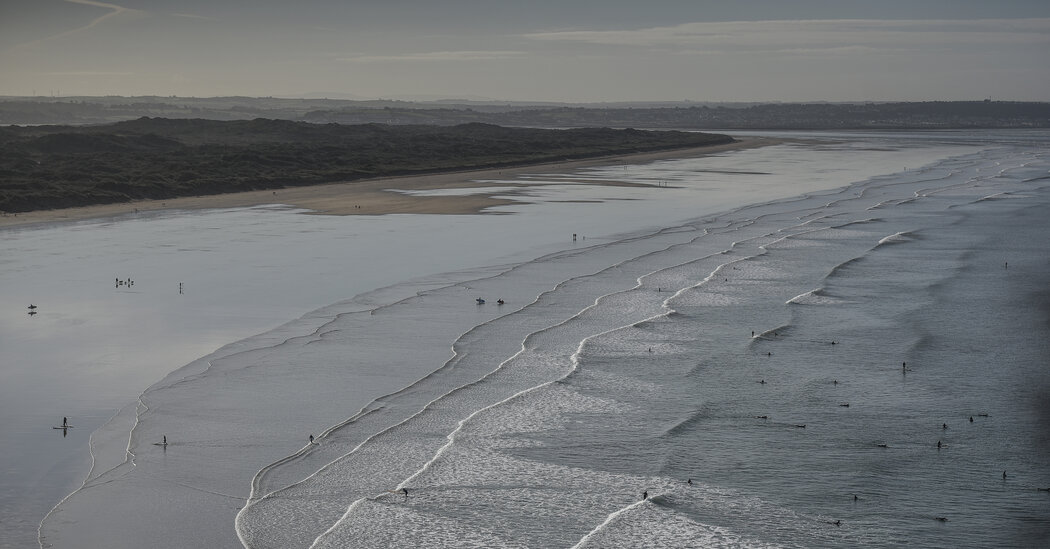CROYDE BEACH, England — The sea already had a bit of a winter chill, but the girls in their purple swim gear were undeterred, dragging their foam boards into the relentless swell.
Back on shore were all their problems — worries about school and friends and the troubling world around them. But in the ocean, as the surf smacked their faces and the salt spray stung their eyes, there was only one objective: riding the momentum of the next wave.
Cheering the students on against the roar of the ocean was their coach, Yvette Curtis. “One more wave!” she chanted to one girl who tumbled off her board. “Yes Millie!” she cheered as another girl sailed past on her feet, with an expression transforming from supreme concentration into sudden delight.
The surfing group of girls, known as the Wave Wahines, were the youngest in the water that afternoon at Croyde Beach in North Devon, England, where some breaks can challenge even the most experienced of surfers.
But Ms. Curtis — who describes herself as a terrible surfer — is determined to help the inexperienced overcome the intimidations of a notoriously difficult sport.
“No one owns that space,” she said, adding that everybody should have the freedom to fall in love with the sea.
Rural England may call up images of rolling green hills and cobblestone-paved villages rather than beachside havens, but surfers in the know have long headed to an expanse of coastline in North Devon. There, breathtaking cliffs and sand dunes give way to beach breaks and barreling waves that locals say hold their own among the best in Europe, especially in the winter months when conditions tend to peak.
The surrounding landscape, in the far southwest of England, has been recognized by the British authorities as an Area of Outstanding Natural Beauty, and parts of it are owned by a conservation society, the National Trust. An 18-mile stretch of the area’s coast became the first in Britain to be recognized as a world surfing reserve this year, an international status putting it alongside famous surf spots like Malibu in California and Manly Beach in Australia.
The designation from the Save the Waves Coalition, some surfers hope, will give local residents more say over how to conserve the ocean here, and help fend off a range of threats, from climate change to pollution to overdevelopment, that could spoil it all.
“The world surf reserve gives us a voice,” said Adam Hall, who helped lead the effort to secure the designation….
Click Here to Read the Full Original Article at NYT > Travel…
